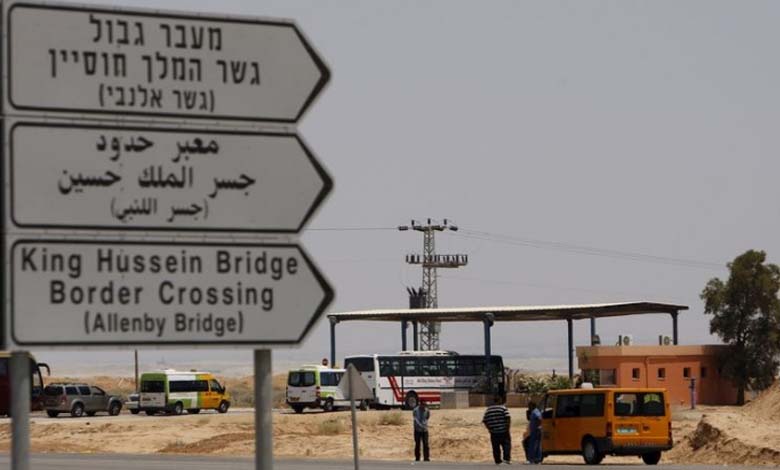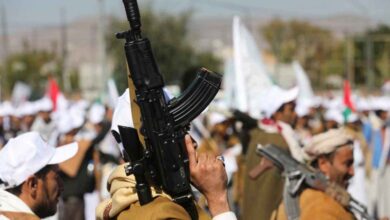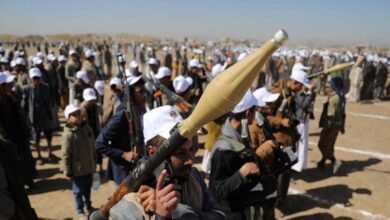“Bridge of Dignity”: The Palestinians’ “Triple Nationality” Gateway to the World

The Palestinian reality has always been associated with bridges and border crossings, which maintain connections with the world and mitigate the absence of national airports and seaports.
-
CNN: New Israeli Evacuation Orders for Thousands of Palestinians in Gaza
-
Euronews: Humanitarian Aid Reaches Gaza, Desperation Grips Palestinians
In this context, Palestinians in the West Bank view the Bridge of Dignity at the border between the West Bank and Jordan, which has made headlines in the past 24 hours, as a lifeline and gateway to the outside world.
This morning, the Jordanian General Security announced the closure of the bridge to outgoing and incoming traffic and cargo until further notice.
-
“The most horrible and cruel”… Palestinians experiencing the Nakba mourn their present
-
Under the guise of aiding Palestinians, Yemen’s Brotherhood officially gathers Al-Aqsa dues through the Maeen government
Yesterday, a Jordanian driver opened fire with his pistol on several Israelis at the King Hussein Bridge (Allenby Bridge) between the West Bank and Jordan, killing 3 Israelis before being shot by Israeli security forces.
Bridge of Dignity
Palestinians refer to this crossing as the “Bridge of Dignity,” while the Jordanian government calls it the “King Hussein Bridge,” and Israel names it the “Allenby Bridge.”
Originally, this “bridge” was a wooden bridge crossing the Jordan River, later reinforced with steel to become an iron bridge, before eventually being converted into a concrete bridge.
-
UNRWA warns: Gaza witnesses the largest displacement of Palestinians since 1948
-
Palestinians in Gaza insist on their right to return despite Israeli aggression
Tens of thousands of Palestinians cross the bridge daily, in both directions, between the West Bank and Jordan. Hundreds of commercial trucks also use the bridge to transport goods between the West Bank and Jordan.
The vast majority of West Bank residents travel from Queen Alia International Airport in Amman to various destinations worldwide, but they first pass through the “Bridge of Dignity.”
Israel restricts West Bank Palestinians from traveling through Ben Gurion International Airport near Tel Aviv, except in rare cases.
-
Famine haunts two million Palestinians in Gaza amid a destructive war
-
Israeli plan to transfer Palestinians to Egypt for $30 Billion
A Long History
The bridge spans the Jordan River, located 60 kilometers from the Jordanian capital, Amman, and 5 kilometers from Jericho in the West Bank, at an altitude of 273 meters below sea level.
The history of the bridge dates back to the Ottoman period in 1885, when it was a wooden structure. It was destroyed during World War I and then rebuilt under the British Mandate in 1918.
It was named the “Allenby Bridge” in honor of General Edmund Allenby, the British Army commander who occupied Palestine before the imposition of the Mandate.
-
Under the banner of resistance… Crimes committed by Hamas against Palestinians
-
Violations and crimes by Hamas against Palestinians
The bridge collapsed again in 1927 due to the Nablus earthquake and was rebuilt, but it fell once more in 1946 at the hands of the Zionist Palmach gang.
The bridge has a close association with destruction, having been completely destroyed again during the 1967 war, but was rebuilt in 1968.
Over the years, it transitioned from a wooden bridge to an iron bridge and then to a concrete one in 2001, and now features 4 lanes for buses, cars, and trucks.
-
Crimes of Hamas against Palestinians: A history of bloodshed
-
How long of bombing and death?” Palestinians are “Lost” in the streets of Gaza
3 Phases
The bridge is divided into two sections: the first under full Israeli control and the second under Jordanian sovereignty.
Palestinians traveling from the West Bank across the bridge go through 3 phases: the first involves departing and checking in for travel and handing over luggage from an area called “the rest area” in Jericho, then they are transported by bus to the Israeli side of the bridge where passports are checked, and finally, they are transferred to the Jordanian side by bus, where Jordanian security checks passports again and luggage is returned.
-
Traumatized Palestinians in Gaza care for shocked pets
-
Palestinians manifest against the detention by Israel of Mahmoud Nawajaa
However, Palestinians from East Jerusalem and foreigners travel through the bridge directly to the Israeli side without going through “the rest area” in Jericho.
The Israeli Airports Authority manages the Israeli side of the bridge, which experiences heavy congestion during summer holidays and the Hajj season.












